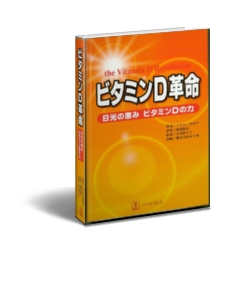.jpg) Imagine. You add more fish in your diet, because you want to eat more healthfully, and after a month you notice you have gained belly fat. You go to your doctor, and after having some tests done, he or she tells you that you are now having trouble regulating your blood sugar. After asking you a few questions, your doctor discovers the culprit—you have been exposed to too many environmental toxins.
Imagine. You add more fish in your diet, because you want to eat more healthfully, and after a month you notice you have gained belly fat. You go to your doctor, and after having some tests done, he or she tells you that you are now having trouble regulating your blood sugar. After asking you a few questions, your doctor discovers the culprit—you have been exposed to too many environmental toxins.
This is exactly what happened to rats who ate fish oil contaminated with high levels of chemical pollutants. Although we look nothing alike, our makeup (as humans) has a lot in common with rats, which is why rats are studied so often. There have been numerous studies linking environmental toxins to weight gain in humans (and rats). However, the study I’m about to tell you about is the first to associate high levels of persistent organic pollutants (POPs) with the onset of insulin resistance.
[Read more…]


.jpg) Attention-deficit/hyperactivity disorder (ADHD) has grown in prevalence in the last twenty years, leaving many wondering why. One answer was determined in a study done on a group children aged eight to fifteen years of age. These children were significantly more likely to have ADHD if their urine had high levels of organophosphate pesticide metabolites.
Attention-deficit/hyperactivity disorder (ADHD) has grown in prevalence in the last twenty years, leaving many wondering why. One answer was determined in a study done on a group children aged eight to fifteen years of age. These children were significantly more likely to have ADHD if their urine had high levels of organophosphate pesticide metabolites.  A new, long-term, Swedish study shows that zinc is invaluable for men with prostate cancer. Researchers found, especially with early prostate cancer, that if men get enough zinc in their diets, they are more likely to die from other causes than from their prostate cancer.
A new, long-term, Swedish study shows that zinc is invaluable for men with prostate cancer. Researchers found, especially with early prostate cancer, that if men get enough zinc in their diets, they are more likely to die from other causes than from their prostate cancer. I have gotten many calls from patients concerned about the tragedy in Japan, and of course concerned how it could affect their own health.
I have gotten many calls from patients concerned about the tragedy in Japan, and of course concerned how it could affect their own health. There has been a lot of controversy about whether soy is safe. I believe that soy is very safe, especially when used in moderation. There have been many, high-quality studies showing soy’s safety for short-term use. Now there is a reliable study showing that soy is safe for postmenopausal woman when taken long-term.
There has been a lot of controversy about whether soy is safe. I believe that soy is very safe, especially when used in moderation. There have been many, high-quality studies showing soy’s safety for short-term use. Now there is a reliable study showing that soy is safe for postmenopausal woman when taken long-term.  In the last few years, vitamin D deficiency has reached epidemic proportions. Because every cell’s health is impacted by vitamin D, having insufficient levels has been linked to an increased risk all kinds of health conditions, including osteoporosis, certain 17 types of cancers, heart disease, autoimmune diseases, and even diabetes along with of course osteoporosis. Now, research shows that a vitamin D deficiency in pregnant women and their babies is quite prevalent. This insufficiency is impacting these children’s health.
In the last few years, vitamin D deficiency has reached epidemic proportions. Because every cell’s health is impacted by vitamin D, having insufficient levels has been linked to an increased risk all kinds of health conditions, including osteoporosis, certain 17 types of cancers, heart disease, autoimmune diseases, and even diabetes along with of course osteoporosis. Now, research shows that a vitamin D deficiency in pregnant women and their babies is quite prevalent. This insufficiency is impacting these children’s health.  My book
My book  I am delighted to announce that my book,.
I am delighted to announce that my book,. Several weeks ago I gave a lecture at the Montage Hotel in Beverly Hills entitled Facial care, Beauty, and Environmental medicine. I was very honored to share the stage with Ken Cook, the president of the Environmental Working Group. Ken gave a beautiful lecture on "10 Americans" that the Environmental Working Group has studied.
Several weeks ago I gave a lecture at the Montage Hotel in Beverly Hills entitled Facial care, Beauty, and Environmental medicine. I was very honored to share the stage with Ken Cook, the president of the Environmental Working Group. Ken gave a beautiful lecture on "10 Americans" that the Environmental Working Group has studied..jpg)



